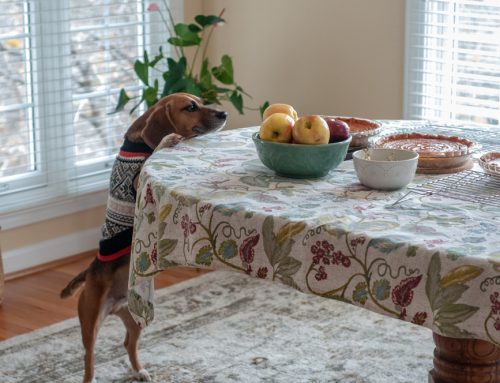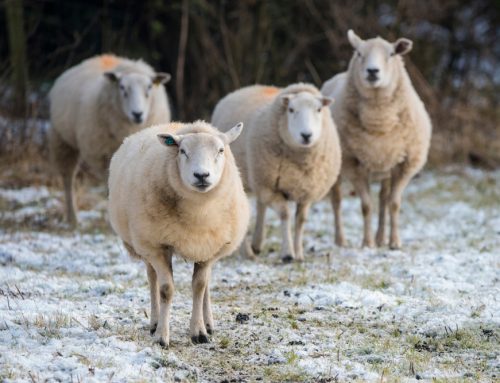How many of you out there have ever heard of Coccidia? Well in the goat world I guess I should ask who hasn’t? That’s right, every one of us knows that Coccidia is a problem in our kids. But, do we all understand the why and what of Coccidia? That is what I am going to try to explain in this article.
I have seen coccidia for years as a small animal practitioner, it causes the same things in dogs and cats as it does in goats….DIARRHEA, particularly mucoid (having lots of mucus), smelly, and sometimes bloody. Other clinical signs include anorexia (no appetite), weight loss, anemia (low red blood cell count), dehydration and death. Do dogs and cats have the same coccidia as goats? NO. Coccidia are bugs that are called host specific. There are kinds of coccidia for goats and there are different kinds for dogs, and different kinds for chickens etc. etc. Unlike the Toxo, cats or dogs cannot give our goats coccidia, neither can cattle or chickens. So don’t worry that your cows are giving it to the goats or that your goats are giving it to the chickens…it won’t happen. What is giving it to our kids?…the adult goats! The one exception is that there is a species that can go between sheep and goats. (One major take-home message DO NOT keep sheep and goats together, they share too many parasites and that will magnify your problems.)
The scientific name of the coccidia organisms is Eimeria. There are 12 different kinds of this bug that affect goats, but in reality, only 2 kinds cause the problems, E. arloingi and E. ninakohlyakimovae (say that name fast 10 times!). Most goats will have about three different kinds of Eimeria in their intestine. Can we tell the difference by looking at the eggs with a microscope—NO. All coccidia look the same under the microscope. Coccidia have a 2-3 week life cycle. When they are eaten they get inside the small intestinal lining cells where they divide and multiply by asexual means. When they are doing this, they destroy those cells and that is why you get the symptoms. Eventually they get a little frisky and decide to multiply sexually. This sexual reproduction is what produces the eggs that you see in the stool. (With protozoan parasites the eggs are called oocysts.) Usually they don’t do this all at once so we do see oocysts on an examination of a sick animal. Occasionally they are all in the asexual phase and the animal is very sick but there are no oocysts being made yet, or there may not be enough cells left for the sexual phase to occur. When this happens, you will not see oocysts on the fecal examination. You need to remember that a negative fecal examination does not mean a kid does not have coccidia.
So who gets sick from coccidia? We all know that the kids can, but can the adults? Usually adults will not get sick. After the initial infection with coccidia the kids will acquire immunity to it. This means their immune system will begin to recognize the organism and protect them so they won’t get sick again. They will continue to carry the organism through out their lives. In other words, you probably will not get negative fecal samples on goats, you may always see coccidia. The most likely age that you will see symptoms in the kids is between 3 weeks and 5 months. Kids getting diarrhea earlier than this probably have something else and not coccidia. (Think about Cryptosporidium.) Kids older than this should have developed immunity to the Coccidia and if they are sick, it is probably due to something else or a combination of problems. However, even though the older kids may not get the diarrhea and be really sick, the bugs may still affect them. When coccidia get into the small intestinal lining they may decrease digestion and slow the growth rate of the kids and this will ultimately decrease their first lactation milk production.
So the questions are: 1. How do we prevent coccidia from becoming a problem? 2. How do we treat it if it does become a problem?
There are several things that might help us reduce the chance of having problems with coccidia. First and foremost we have to decrease the amount of fecal material that our goats come in contact with. Make sure there is no poop in the feed or the water. Coccidia grow best in damp shady areas, and the eggs can live for 3 months to a year in the environment. Try to expose the pens and stalls to sunlight whenever possible. Ultraviolet rays in sunlight are damaging to the eggs and sunlight will help to dry out the pens. Keep the stalls cleaned regularly. We also have to keep our young goats in good condition with proper nutrition and very low stress. Things that can stress the kids are weaning, changing foods, transporting, weather changes, or crowded conditions. The use of coccidiostats in our young goats is also worthwhile. Some coccidiostats on the market are Amprolium (Corid), Decoquinate (Deccox), Lasalocid (Bovatec) and Monensin (Rumensin). There are some products that are on the market that have Rumensin and Deccox mixed in the feed. One thing that you can do is add Monensin or Lasalocid to the feed of the doe 30 days before she gives birth and this will reduce the amount of coccidia eggs that she passes thus reducing the contamination in the pen. The dose for either Lasolacid or Monensin is ½ mg of the drug per pound of body weight per day. Feeding the kids Decoquinate is very safe and can be added to the feed or milk to help prevent the intestinal damage done by coccidia. In addition to helping to prevent symptoms of disease in the 3 week to 5 month old kids. Studies have shown that if we feed a coccidiostat to the kids for about 75 days from the time we wean them, the milk production in their first year will be increased as much as 15%. The dose for Decoquinate is ¼ mg per pound per day. Remember, none of the coccidiostats are approved for animals whose milk is being used for human to drink, so don’t give them to the doe when she is producing milk.
OK, what if our babies do get sick, how do we deal with this? We have to support them through it with good care. First, isolate all the sick animals. The diarrhea may have tons of eggs in it and we don’t want our other kids to get infected if we can help it. Next, good nutrition—make sure they keep eating and add electrolytes to their ration. Keep them warm and dry. Some kids may need blood transfusions, pain medications and corticosteroids. When goats have this much diarrhea, all the good bacteria are washed out and the bad bacteria like e-coli begin to flourish and contribute to the diarrhea. Antibiotics may be needed to treat these bad bacteria in the intestines. Probios, which will add normal bacteria back to the GI tract, is also very important. Yogurt with active cultures will help, but Probios is designed for ruminants and adds more of the different kinds of good bugs back to the animal. Sulfa drugs such as sulfaquinoxaline, sulfamethazine (Sulmet), and sulfadimethoxine (Albon) may be used although none are approved for goats in this country. Amprolium (Corid) may also be used but be very careful, this drug can cause thiamin deficiency and the kids brains may turn to mush (polioencephalomalacia). You can buy these products to be put in the water but then you don’t know exactly how much each kid is getting. When an animal is sick, go ahead and drench them with the proper dose. Both Sulmet and Albon come in a 12.5% solution that you can get at the CO-OP. Treat the animals for 5 days minimum but I prefer 7. Give a dose of 2cc per 5 pounds, with Albon you can drop the dose to 1cc per 5 pounds after the first day. You can also add a little bit of molasses or Karo syrup to the medicine and the kids won’t hate it as much. The coccidiostats should also be used as I mentioned earlier.
Coccidia are an inevitable fact of life when you have goats and there is no way to truly prevent it. Work hard at keeping those babies clean and dry and stress free. Remember, the take home message is that improved hygiene is the cornerstone of coccidia control







Leave A Comment